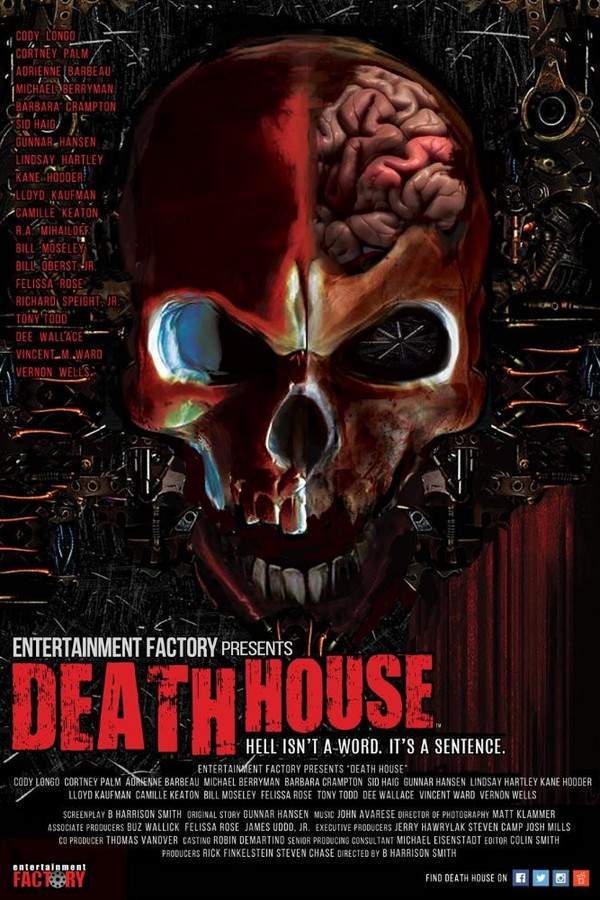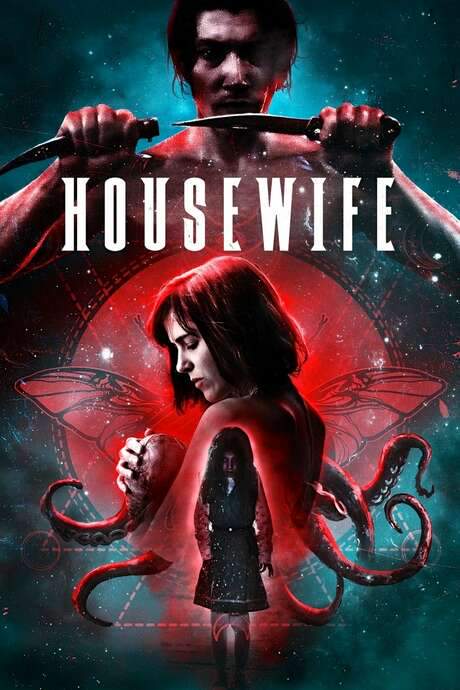
House of Whipcord
Year: 1974
Runtime: 102 mins
Language: English
Only young girls are permitted inside, and none ever leave. In a remote English countryside estate, a disgraced former judge together with his lover and a band of ex‑prison warders run a secret detention house for girls they deem insufficiently punished for their crimes. They impose a brutal, personal brand of justice, determined to keep the inmates from ever returning to their former lives.
Warning: spoilers below!
Haven’t seen House of Whipcord yet? This summary contains major spoilers. Bookmark the page, watch the movie, and come back for the full breakdown. If you're ready, scroll on and relive the story!
House of Whipcord (1974) – Full Plot Summary & Ending Explained
Read the complete plot breakdown of House of Whipcord (1974), including all key story events, major twists, and the ending explained in detail. Discover what really happened—and what it all means.
Anne-Marie DeVernet, Penny Irving, is a naive French model who appears at a glittering London art-gallery party. The evening takes a sharp turn when she learns her photographer boyfriend has just exhibited a shot in which she is depicted being arrested for public nudity. The humiliation drives a rift between them, and Anne-Marie leaves the party feeling exposed and alone. Seeking a refuge from scandal and scorn, she is drawn toward a mysterious, enigmatic figure at the gathering, Mark E. DeSade, Robert Tayman, whose opaque charm and promise of escape tempt her to trust him. He invites her away to his secluded country estate, a private sanctuary that promises safety from the prying eyes of the world outside.
What begins as an alluring escape quickly reveals a far darker truth. At the estate, Anne-Marie discovers that Mark’s allure hides a disturbing operation. He is not simply a companion for the night; he is a facilitator for a disturbing network that ships young women to a hidden life of punishment and control. The true mastermind is Margaret, a formidable and ruthless former reform-school matron whose past is as scorched by scandal as it is exacting in its current cruelty. Margaret, with the help of a cadre of hardened wardens, runs a private, illegal prison within the mansion, where she and Mark use fear, manipulation, and violence to discipline those deemed “morally corrupt.” The operation is justified in the name of “moral correction,” but the true motive is power, control, and profit, hidden beneath a veneer of propriety.
Margaret’s long history with the law surfaces in the memory of a trial from years earlier. Although she was found not guilty, she was dismissed in disgrace after a string of horrifying abuses at the reform school she once ran. She seduced the High Court Judge who heard her case, and together they transformed the mansion into a brutal repository for young women who fail to meet the standards she promotes. The mansion becomes a stage on which a grim script is followed: the prisoners are subjected to a rigid, inhumane regime overseen by a small army of stern women who enforce order with physical punishment. The system rests on a simple, cruel mechanism—three “demerits” determine a fate that grows progressively harsher as a prisoner accrues them.
-
Strike one: two weeks in solitary confinement.
-
Strike two: forty lashes.
-
Strike three: death by hanging.
As Anne-Marie endures the escalating cruelty, she clings to a stubborn hope of escape. Her persistence becomes a danger to the people who run the place, and she makes several attempts to break free. Each time, she is chased down, subdued, and dragged back into the claustrophobic maze of rooms and corridors where the wardens keep their watchful eyes on every movement. Her resilience, however, is more than a personal fight; it becomes a catalyst that sets in motion the unraveling of the entire operation.
Meanwhile, Anne-Marie’s flatmate Julia and Julia’s boyfriend Tony sense something is terribly wrong and undertake a perilous quest to locate Mark. Their investigation leads them to the hidden fortress of the estate, and they discover the breadth of Margaret’s murderous enterprise after Mark himself uncovers the depth of his mother’s crimes. He witnesses the chilling disposal of a prisoner’s body by Margaret’s aides, an act that confirms for him the monstrous extent of what has been built in the name of discipline.
Ann-Marie’s struggle shifts from endurance to a race against time as she makes one final bid for freedom. But the timing proves catastrophic: she is hanged after earning the third demerit, a fate she meets with a quiet, almost defiant dignity as the truth about the prison’s brutality becomes undeniable to those who finally arrive too late.
The police arrive as the house of secrets begins to crumble. Mark confronts his mother, a confrontation that ends with his accidental death at her hands—the very gentle façade of the family’s power collapsing in a single, brutal moment. Margaret, realizing the game is up, takes her own life with the same noose she used for the prisoners, a grim symmetry that underscores the crime-scene gravity of her reign. The rest of the inmates—though scarred—are not forgotten: the judge and his wife’s henchwomen are arrested, and Julia, along with the surviving prisoners, is freed from the nightmare that had consumed their lives.
This story unfolds with a stark, clinical clarity that refuses to flinch from the brutality it catalogs. The contrast between the gallery’s polished veneer and the estate’s oppressive interior serves as a bleak meditation on the ways society can cloak cruelty behind respectable rhetoric. The performances—led by the chilling authority of Margaret and the unsettling charm of Mark—pull viewers into a world where power is exercised not through persuasion, but through fear and punishment. The film lingers on the moral paradox at its center: the idea that “moral correction” can be weaponized to control, destroy, and ultimately reveal the fragility of those who believe themselves to be safe within such a system.
In the end, the people who survive—Julia and the other prisoners—step out from the shadows of the mansion into a daylight that feels earned and precarious. The story closes on the remnants of a life rebuilt from the ashes of a carefully constructed lie, leaving a lingering question about how far society will go to police morality and what will happen to those who attempt to redefine it from within a house built on secrets.
Last Updated: October 09, 2025 at 12:38
Unlock the Full Story of House of Whipcord
Don't stop at just watching — explore House of Whipcord in full detail. From the complete plot summary and scene-by-scene timeline to character breakdowns, thematic analysis, and a deep dive into the ending — every page helps you truly understand what House of Whipcord is all about. Plus, discover what's next after the movie.
House of Whipcord Timeline
Track the full timeline of House of Whipcord with every major event arranged chronologically. Perfect for decoding non-linear storytelling, flashbacks, or parallel narratives with a clear scene-by-scene breakdown.

Similar Movies to House of Whipcord
Discover movies like House of Whipcord that share similar genres, themes, and storytelling elements. Whether you’re drawn to the atmosphere, character arcs, or plot structure, these curated recommendations will help you explore more films you’ll love.
Explore More About Movie House of Whipcord
House of Whipcord (1974) Scene-by-Scene Movie Timeline
House of Whipcord (1974) Movie Characters, Themes & Settings
House of Whipcord (1974) Spoiler-Free Summary & Key Flow
Movies Like House of Whipcord – Similar Titles You’ll Enjoy
Death House (2018) Film Overview & Timeline
Housewife (2017) Complete Plot Breakdown
House of Evil (2017) Ending Explained & Film Insights
House on the Edge of the Park (1980) Plot Summary & Ending Explained
House of Inequity (2023) Complete Plot Breakdown
The House by the Lake (1976) Story Summary & Characters
Whirlpool (1970) Plot Summary & Ending Explained
The Fun House (1973) Film Overview & Timeline
House of the Damned (1974) Plot Summary & Ending Explained
The House with Laughing Windows (1976) Story Summary & Characters
The House That Screamed (1969) Ending Explained & Film Insights
The House by the Edge of the Lake (1979) Complete Plot Breakdown
The Whip and the Body (1963) Ending Explained & Film Insights
The House of the Dead (1978) Detailed Story Recap
House of Mortal Sin (1976) Complete Plot Breakdown

















